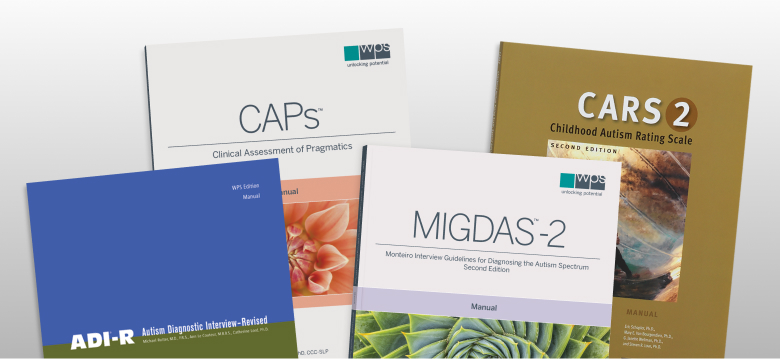Sound Check: Understanding Auditory Processing in Autism
Monday, October 27, 2025
For many autistic individuals, differences in the complex auditory pathways of the brain make it a challenge to process sounds. In fact, differences in auditory processing influence some of the traits we most closely associate with autism, like social communication and sensory sensitivities.
What Is Auditory Processing?
Auditory processing is how our brains take in sounds and determine what they mean. It takes place in different parts of the brain that are optimized for perceiving, interpreting, and remembering sounds. Auditory processing is not the same as hearing. In fact, a person with completely intact hearing can have difficulties in auditory processing.
Why Does Auditory Processing Matter for Autistic People?
Some studies show that around 70% of autistic children have auditory processing differences (Lau et al., 2023). Autistic individuals say these differences can bring on
- anxiety,
- distraction, and
- sensory overload.
That stress intensifies in social situations where there is “a steady stream of auditory (and other sensory) information from multiple sources simultaneously” (Poulsen et al., 2024).
Auditory processing difficulties can also change the way receptive language develops, which can make it harder to communicate, especially in noisy settings. For example, imaging studies show that the speech processing areas of the brain must recruit “extra neural resources to focus on social cues” when sound is at a distracting level (Poulsen et al., 2024).
How Do Auditory Processing Differences Interact with Autistic Traits?
The relationship between auditory processing and autism is complex. Auditory processing difficulties may underlie or intensify both social communication differences and repetitive behaviors. They also contribute to sensory over- and under-sensitivity. Here’s a breakdown of the interactions.
Sound Sensitivities in Autism
Sensory issues receive a lot of attention in autism research, and many autistic people say sound sensitivity is the most challenging sensory issue they face (Wada et al., 2023). One of the most common sensitivities is decreased sound tolerance (DST), which is sometimes called auditory hypersensitivity. Experts describe DST as an umbrella term including at least three variations:
- Hyperacusis, where the auditory processing system internally amplifies sound so much that it feels distressing or painful (Carson et al., 2024)
- Misophonia, where certain types of sounds spark anger or disgust (Aldakhil & Shaik, 2025)
- Phonophobia, an intense fear of a specific type of sound (Williams et al., 2022)
Researchers say sound sensitivities present an “immense barrier to accessing the educational curriculum for students with ASD” (Mallory & Keehn, 2021). Sound sensitivities can also lead to sleep disturbance and emotional dysregulation, and they can slow the development of higher-level cognitive skills, including those needed for social communication (Poulsen et al., 2024; Gonçalves & Monteiro, 2023). There’s some evidence that auditory over- and under-sensitivity may also be associated with sensory or motor repetitive behaviors (Noda et al., 2024).
Learn more about assessing sensory processing patterns.
Speech-In-Noise Difficulties
Another skill that can be challenging for autistic children and adults is auditory filtering. That’s the ability to pick out and focus on important sounds while ignoring unimportant ones. In a longitudinal study that tracked a group of autistic children at ages 3, 6, and 9 years, researchers found significant differences in auditory filtering abilities in autistic children. As the children grew, those auditory filtering difficulties were associated with disruptive behaviors and challenges with adaptive behaviors (Lau et al., 2023). Researchers have also linked auditory filtering differences to an insistence on sameness, one of the key characteristics of autism (Noda et al., 2024).
We use auditory filtering to process speech in noise—like trying to focus on a conversation in a bustling coffee shop. Or trying to grasp what the teacher is saying while others are whispering or clicking their pens. In general, it’s easier to process speech if the background noise is not someone’s voice. It gets harder when the competing sound is speech.
Studies show that processing speech in noise is particularly challenging for autistic students. In one Dutch study, researchers found that autistic children and teens had more trouble perceiving individual words when a steady background noise was present. Understanding whole sentences proved a little easier, possibly because study participants could use context to fill in the gaps. But when the background noise was changed to speech, the study participants had a hard time telling one conversational stream from another (Ruiz Callejo et al., 2023).
You can make classrooms and student spaces more supportive for autistic students.
Auditory Discrimination and Perception in Autism
Auditory discrimination is the ability to notice and describe how sounds differ from each other. Researchers test this ability in several ways.
In one study, researchers used electroencephalograms (EEG) or magnetoencephalograms (MEG) to track the brain’s response to changes in sounds. Usually, when the pitch, volume, or rhythm of a sound changes, an EEG or MEG records a change in brain waves. But the EEG/MEG patterns produced by autistic participants didn’t show any response to sound changes. Researchers said this reduced sensitivity to change might mean an autistic individual could have trouble predicting or adapting to new sounds (Rotschafer, 2021).
Auditory perception isn’t always impaired in autistic individuals. A 2023 research review notes that some autistic people may be better at detecting the pitch in non-linguistic sounds than in speech sounds. Researchers speculated that autistic individuals “may not give speech sounds the same priority” as non-linguistic sounds (Hisaizumi & Tantum, 2024).
Some studies show that autistic people with strong cognitive abilities and verbal memory are exceptionally good at perceiving pitch and remembering vocal melodies (Gonçalves & Monteiro, 2023; Ong et al., 2024). In addition, some autistic individuals can learn another language from screen exposure without social interaction, a phenomenon known as unexpected bilingualism (Dumont et al., 2024).
How Do Auditory Processing Differences Affect Participation in School?
Auditory processing difficulties can interfere with a student’s classroom functioning in a variety of ways:
- Sound sensitivities can make students uncomfortable—and if noises are loud or unpredictable enough, they could cause emotional dysregulation, sensory overload, or behavior issues. Over time, sound sensitivities could lead to school avoidance.
- Speech-in-noise difficulties may make it harder for autistic students to follow directions or take part in conversational activities.
- Differences in auditory processing could keep a student from detecting changes in tone, making it harder to pick up on social cues.
- Auditory processing difficulties can delay or interrupt the development of oral language skills, leading to problems with listening comprehension.
Learn more about how auditory processing affects a student’s ability to read.
How Can We Differentiate Autism from Auditory Processing Challenges?
Auditory processing disorders and autism can both involve behaviors like these:
- inattention
- difficulty understanding verbal information
- difficulty following directions
- delayed response to verbal communication
- over- or under-sensitivity to sound
- trouble “reading” social cues
- difficulty with reading and listening comprehension
Whether a behavior is related to autism or to CAPD depends on what prompts it—and finding root causes is what assessment professionals are trained to do. When conditions overlap, it’s best to work with a multidisciplinary team, ideally including audiologists, speech–language pathologists, psychologists, and educators who can conduct relevant assessments. You may also want to include an educational diagnostician to integrate results across all domains.
What Can Schools Do to Support Autistic Students with Listening Difficulties?
1. Complete a holistic evaluation. Listening to autistic students and their caregivers is the best place to start. Their concerns and priorities, along with those of their teachers, will help you build an evaluation team with the expertise needed to select, administer, and interpret appropriate assessments.
2. Identify meaningful, evidence-based supports. As part of the evaluation, a team member will likely observe the student in class and during school activities. Those observations will help you determine which supports a student needs and which classroom adaptations could make the student’s experience more comfortable and successful. Many practitioners include auditory training in an intervention plan, including:
- Dichotic listening training, a therapy that improves the student’s ability to pay attention to different sounds in each ear
- Localization and lateralization training, which can improve auditory memory and the student’s ability to understand speech in noise
- Musical training (singing lessons and pitch training), therapies that boost the ability to grasp the sequence and pattern of sounds
Visual aids, preferential seating, and assistive devices such as noise-reduction hearing aids can all make a difference.
3. Incorporate your data and plans into an IEP if appropriate. Under the Individuals with Disabilities Education Act (IDEA), auditory processing disorders can be considered speech or language impairment, specific learning disabilities, or other health conditions.
If a student is eligible, having an individual education plan (IEP) can protect the student’s ability to receive services and supports. An IEP should clearly state a student’s present levels, list neurodiversity-affirming goals, identify accommodations and adaptations, and assign responsibility for follow-through. One of the benefits of an IEP is that it goes with the student if the family moves to another school district.
Key Messages
While many autistic people have auditory processing issues, the areas of need differ from person to person. A comprehensive evaluation can pinpoint specific listening skills and enable you to plan effective accommodations and interventions. It can also help you adapt environments and instruction so that students can be more successful academically and socially.
Learn More:

Resource Guides and Tool Kits
IEP Goals: A Simple Guide to Writing SMART, Meaningful, and Legally Defensible Goals
A How-To Resource for the IEP Team
IEPs aren’t just legal checklists—they’re invitations to collaborate, to dream, and to adapt learning for every child.
Read More >

ProLearn® On-Demand Webinar
Autism Today: Applying Diagnostic Criteria to Diverse Populations
This webinar reviews current autism diagnostic criteria, contrasts medical and social models, and explores research on diverse presentations across populations.
Learn More >

WPS Shop
Autism Assessments
Explore WPS’s trusted autism assessments—evidence-based tools to support accurate identification and intervention across the spectrum.
Shop Now >
Research and Resources:
Aldakhil, A. F., & Shaik, R. A. (2025). Misophonia in autism: A systematic review of prevalence, clinical features, and comorbidities. Research in Developmental Disabilities, 161, 105005. https://doi.org/10.1016/j.ridd.2025.105005
Bigras, J., Lagacé, J., El Mawazini, A., & Lessard-Dostie, H. (2024). Interventions for school-aged children with auditory processing disorder: A scoping review. Healthcare, 12(12), 1161. https://doi.org/10.3390/healthcare12121161
Carson, T. B., Guerrero, L. A., Niebles, M., & Gayle, C. G. F. (2024). Modified cognitive behavioral therapy approach reduces loudness discomfort levels for an autistic child with hyperacusis: case report. Frontiers in Psychiatry, 15, 1440624. https://doi.org/10.3389/fpsyt.2024.1440624
Dumont, C., Belenger, M., Eigsti, I. M., & Kissine, M. (2024). Enhanced pitch discrimination in autistic children with unexpected bilingualism. Autism, 17(9), 1844–1852. https://doi.org/10.1002/aur.3221
Gonçalves, A. M., & Monteiro, P. (2023). Autism spectrum disorder and auditory sensory alterations: A systematic review on the integrity of cognitive and neuronal functions related to auditory processing. Journal of Neural Transmission, 130(3), 325–408. https://doi.org/10.1007/s00702-023-02595-9
Hisaizumi, M., & Tantam, D. (2024). Enhanced sensitivity to pitch perception and its possible relation to language acquisition in autism. Autism & Developmental Language Impairments, 9, 23969415241248618. https://doi.org/10.1177/23969415241248618
Lau, B. K., Emmons, K. A., Lee, A. K. C., Munson, J., Dager, S. R., & Estes, A. M. (2023). The prevalence and developmental course of auditory processing differences in autistic children. Autism Research, 16(7), 1413–1424. https://doi.org/10.1002/aur.2961
Mallory, C., & Keehn, B. (2021). Implications of sensory processing and attentional differences associated with autism in academic settings: An integrative review. Frontiers in Psychiatry, 12, 695825. https://doi.org/10.3389/fpsyt.2021.695825
Noda, H., Yoneda, N., Kamogawa, K., Tanaka, G., Ide, M., & Iwanaga, R. (2024). Sensory processing associated with subcategories of restricted and repetitive behaviors in Japanese children and adolescents with autism spectrum disorder. Frontiers in Child and Adolescent Psychiatry, 3, 1411445. https://doi.org/10.3389/frcha.2024.1411445
Ong, J. H., Zhao, C., Bacon, A., Leung, F. Y. N., Veic, A., Wang, L., Jiang, C., & Liu, F. (2024). The relationship between autism and pitch perception is modulated by cognitive abilities. Journal of Autism and Developmental Disorders, 54(9), 3400–3411. https://doi.org/10.1007/s10803-023-06075-7
Poulsen, R., Williams, Z., Dwyer, P., Pellicano, E., Sowman, P. F., & McAlpine, D. (2024). How auditory processing influences the autistic profile: A review. Autism Research, 17(12), 2452–2470. https://doi.org/10.1002/aur.3259
Rotschafer S. E. (2021). Auditory discrimination in autism spectrum disorder. Frontiers in Neuroscience, 15, 651209. https://doi.org/10.3389/fnins.2021.651209
Ruiz Callejo, D., Wouters, J., & Boets, B. (2023). Speech-in-noise perception in autistic adolescents with and without early language delay. Autism Research, 16(9), 1719–1727. https://doi.org/10.1002/aur.2966
Wada, M., Hayashi, K., Seino, K., Ishii, N., Nawa, T., & Nishimaki, K. (2023). Qualitative and quantitative analysis of self-reported sensory issues in individuals with neurodevelopmental disorders. Frontiers in Psychiatry, 14, 1077542. https://doi.org/10.3389/fpsyt.2023.1077542
Williams, Z. J., He, J. L., Cascio, C. J., & Woynaroski, T. G. (2021). A review of decreased sound tolerance in autism: Definitions, phenomenology, and potential mechanisms. Neuroscience and Biobehavioral Reviews, 121, 1–17. https://doi.org/10.1016/j.neubiorev.2020.11.030
